I have seen the future…
Standing on a remote runway in the high mountainous desert listening to and feeling the WHUUMP! WHUUMP! of 500lb bombs dropping approximately five miles away while unmanned aerial vehicles (UAVs) take off on the runway in front of me, one might easily mistake this place for an air base in Afghanistan. While I was not in Afghanistan or any place in the Middle East, I was in a place where they are flying active combat missions in those regions of the world. This seeming dichotomy can best be resolved when you realize that this place, Creech AFB is an almost equally exotic destination to the Middle East in the Nevada desert North of Las Vegas next to the Atomic Test Range. It is here that I visited the 432nd wing, operators of the famed UAV MQ-1 Predator and MQ-9 Reaper to get a feel for operations, see some of the technology and better understand what is happening in the world of unmanned air reconnaissance and air combat.
The last time I came through in 1990, the base essentially comprised a few asbestos filled buildings and a single runway of 3000ft or so. Not much changed for most of the following decade, but in the last few years there has been a dramatic investment in infrastructure at this base including many new buildings, a new control tower, new very large hangars in the North East corner of the base, a new runway and a substantial increase in length of the existing runway all to accommodate the increase in requests for operations by the men and women who work here. In fact, there have been a significant number of increases in personnel over the past year with another 200+ maintenance personnel on base as they stand up more Reapers by summer. Currently there are six squadrons on base, five of them are flying squadrons. The 11th is the training squadron for Predator. The 15th and the 17th are flying combat right now while the 30th is a test squadron. The 42nd is the new Reaper squadron that deployed last year in September for the first time.
My morning briefing with Colonel Chris Chambliss and Lieutenant Colonel Mark Hoehn was a most informative and eye opening experience that detailed the history of the 432nd wing, but also covered the technology, strategy and implementation of the future of air combat, reconnaissance, search and rescue, psyops, electronic warfare and much more all happening in a little backwater known as Creech AFB. The wing has a rich history going back to April of 1943 when they were first organized as the 432nd Observation group. The 432nd continued on in various forms with 3 aces coming out of the wing in the Vietnam war and disbanded and reformed several times before finally being reactivated at Creech on May 1st, 2007 with Col. Chambliss as the wing commander. Col. Chambliss flew F-16s for the better part of 20 years before standing up the wing and can now, rightfully be credited as being in command of the first operational combat UAV wing in the Air Force. Mark Hoehn few F-16s and F-117s before coming to Creech and is involved in the Reaper operations at Creech. One other handler that was assigned to me was Lt. Col. Greg Christ, soon to be Col. Greg Christ that along with Lt. Col Mark Hoehn spent the rest of the morning with me guiding me around the base, showing me operations, equipment and otherwise seeing to my needs on base.
Interestingly, my first and now sustained impression of this combat wing can be best described as an almost guerilla operation that has in less than two years become the #1 most requested asset in the US Air Force. The feel here is very different from other Air Force operations which may partially explain how and why these folks are doing something very different from what most of Air Force crews are used to doing.
What is the mission they are doing here? Specifically, it is to fly UAV operations around the world supporting air and ground combat, reconnaissance, search and rescue, psyops, and just about every air operation you can think of is either being planned, thought about or actively engaged in. The focus at Creech is long distance, time criticality and training meaning that these platforms can travel on short notice great distances and sit over targets for hours whereas fast jets or even helicopter loiter times are typically measured in minutes to tens of minutes. This is particularly important because reconnaissance often means that targets of interest often do not move for long periods of time. Additionally, reconnaissance targets are unpredictable and it is important to be able to task an observation as needs arise. While powerful, it is difficult and very expensive to retask a satellite and is even relatively difficult to reprogram Global Hawk. However, it is not hard for Predator or Reaper to re-calibrate their mission, re-locate and operate in new environments. Finally, the training mission is important as Creech AFB is the *only* training location for Predators and Reapers. Training is also an important part of the mission as the Air Force is training Predator operators in the Royal Air Force as well as the US Navy, Homeland Security and others including NASA. Homeland Security apparently needs the training as they had two Predators, but recently crashed one. The presence of the Royal Air Force surprised me, but British 39 Squadron have purchased Reapers and are currently flying a combat air patrol (CAP) from Creech AFB. Interestingly 3rd Special Ops Squadron located down at Nellis AFB is also flying CAPs and will be moving to Creech shortly.
It should be noted that there are many different kinds of UAVs from tiny hand launched devices all the way to Global Hawk and DARPA’s vulture program designed to keep an aircraft with a 1000lb payload aloft for five years. However, it can be argued that both the Predator and Reaper are the most successful of the UAVs and while the Predator platform at least was expected to function purely as a spy drone whose traditional roles include Intel, Surveillance and Reconnaissance (ISR), it has become in the past two years a fully combat capable aircraft with a combat payload capability of 300 lbs, enough for a couple of Hellfire missiles. With the exception of the Army loading up a RQ-5 Hunter UAV with the Viper Strike glide bombs, the Predators and Reapers of the 432nd wing are the only ones who are “blowing stuff up”. That said, while it is used for strike missions, the Predators roles are still primarily ISR leaving the much larger Reaper to function as a strike aircraft capable of carrying a 3000 lb payload, almost the same weapons load as an F-16.
These aircraft have been baptized in and are most effective in urban environments where one can and often needs to loiter for extended periods of time. Both Predator and Reaper have infrared (IR) sources in the optics ball itself that is used not only for takeoff and landing at night, but also targeting and IR illumination from altitude. It is remarkable to see how much IR energy can be delivered from altitude, illuminating huge swaths that can be seen with IR sensitive night vision devices.
The life of a Predator or Reaper begins at the General Atomics factory. MQ1 Predators are boxed up, then shipped to Creech AFB where they are assembled, tested and qualified. Reapers are assembled at the General Atomics factory and typically flown up to Creech AFB or even simply flown overseas to the theatre of operations straight from the factory as assembly of the Reaper is considerably more complicated. Upon delivery, each plane becomes part of a Combat Air Patrol (CAP). These CAPs are flown the proverbial 24 hours a day, 7 days a week and 365 days a year. Each CAP group comprises 4 airplanes unless they are co-locating with another CAP, in which case the CAP is comprised of 3 aircraft. 2 ground control stations (GCS) are deployed with a CAP, one in theatre and one back in Creech to fly the mission with full motion video and control functionality. 80 personnel are in each CAP comprising approximately 50 people for launch, recovery and aircraft maintenance with 3-4 dedicated operations crews that perform takeoff and landing.
An operation happens through the use of GCSs used for launch and recovery that are sent wherever in the world they are needed. Launch and recovery control occurs with an operational radius of line of sight or approximately 100 miles in good weather. However, once the aircraft is in the air, pilots from Creech AFB in Nevada are notified the aircraft is airborne. For operations in the Middle East, the GCS at Creech is notified of the aircraft availability, then uses Internet optical fiber over to Europe, grabs the data over a KU band satellite in geosynchronous orbit, then logs into the airplane and assumes control for the next 8-16 hours flying the mission from Creech AFB. Data and full motion video is then pumped back to Creech as well as other locations including intel exploitation centers. These centers are typically Langley AFB in Virginia but even some of the Air National Guard (ANG) units with intel experts and imagery analysis are involved with GCSs positioned in Fargo, North Dakota, two operations in California soon to be three, one in Tucson, Arizona soon to be two, one in Reno, Nevada and locations in Alabama among others. It is important here to note that this is an ideal job for many ANG crews as these flight crews can live at home with their families, do not have to deploy overseas, and there is regular shift work. This is especially important for air force bases that have lost planes and crews due to BRAC like March AFB, Minot AFB and Ellington Field in Houston as well as the soon to be reductions in Syracuse, NY.
Regardless of who is actually operating the aircraft, the goal of these operations is to “get the ball over the target” with the ball referring to the optical package carried underneath the nose of all Predators and Reapers. Both Predator and Reaper have electro-optical (EO) and IR cameras on them with laser designators providing targeting options for onboard Hellfire missiles as well as providing the ability to “buddy lase” or provide laser targeting for weapon systems on other platforms including other Air Force, Navy, Army or Marine Corps aircraft as well as ground based systems or crews such as US Air Force joint terminal attack controllers embedded with ground units who are able to receive video imagery on the ground. This video linking allows the picture that the pilot or sensor operator has on a 20in monitors in the ground control stations to be seen by the guys on the ground with a ruggedized laptop. Additionally, full voice communication is possible with talk ons or real time conversations and exchanges of data between ground units and the pilots in Nevada.
The Reaper has similar capabilities but is a considerably larger airframe capable of carrying 2 500lb laser guided bombs and 4 Hellfire missiles. The Reaper can technically carry twice that ordinance and the Air Force is working to increase that envelope as they go as the limit of how much the airplane can carry was previously how much ordinance they could deliver before needing to return to base for stores replenishment. Since that point has already been achieved, the concern has turned to hanging more “stuff” off of the airframe. Later this calendar year, the Reaper will carry GBU-38 JDAM GPS guided weapons which will take advantage of the Reapers onboard improved synthetic aperture radar (SAR).
With JDAM and SAR, they are capable of operating outside of the visible spectrum allowing improvements in all weather capability. SAR is capable of quite good resolution, particularly when combined with other imaging modalities such as the daylight camera. The actual numbers are classified, but I was looking at the spars or structural support elements in a small aircraft shelter 6-7 miles away from the aircraft which makes for an impressive image. Seeing vehicles, colors of vehicles or even individuals is no problem. It is also possible to fuse IR and the low light TV picture which currently is unique to Reaper. However, the bewest block 15 Predator have this ability as well and the Air Force is looking to retrofit it into the block 10 Predators.
Operations are carried out in real time with a 2 second delay due to the lag time it takes to transmit video and aircraft control through the network, but that is still “real time”. And while the pilot is not physically in the aircraft, missions can still be harrowing. For instance, some of the operations I watched while at Creech included a Predator “buddy lasing” a 500lb bomb drop from a Marine Corps Harrier which tends to happen more with the Predator than the Reaper given that the Reaper carries it own “heavy” stores. Other operations I watched included an operation close to a mosque in a mixed use environment with the possibility of collateral damage. Because of the surgical precision with which the aircraft can target, there were no collateral losses as the Reaper fired a Hellfire missile onto an insurgent vehicle carrying a heavy machine gun. Yet another operation that I watched was of a Predator providing cover for a Marine Corps patrol that was taking fire from a sniper in a crowded street. The Predator was able to use combined IR and visual cameras with fused data to see muzzle flashes from the sniper coming out of a particular window allowing the Predator to fire a Hellfire missile directly into the window where the sniper was hiding.
It is also important to note that Predators and Reapers have remarkably small sound profiles. Watching Predators take off, I was surprised at how quiet they were, but with a small turbocharged Rotax engine, Predators can loiter above targets providing data in real time without the subjects being aware of the aircrafts presence. One example of this that I watched was an operation with a SPECOPS team raiding a house with a high value individual. The Predator circled above the house for quite some time providing real time data on the location of animal pens so that the SPECOPS teams would not spook them thus giving away their positions, locations of people around the house and more. During the prosecution of the mission, pilots in Nevada were able to communicate with ground crews in real time, notifying them of people escaping out the back of the house into fields at night. The on-board IR pointer on the Predators was able to provide a cone of IR illumination from the air revealing the individuals hiding position on the ground to the SPECOPS team wearing NVGs and the individual was taken into custody without a shot fired and no bombs or missiles having to be used.
Finally it should be noted that UAV operations are not limited to warfare. Creech AFB has a CAP on reserve for domestic Search and Rescue and disaster assistance as well. Post Hurricane Katrina, they were asked by Homeland Security to provide 4 Predators to assist in locating survivors throughout the areas affected by the storm and related storm surge. They worked closely with the FAA to provide temporal corridors where the Predators could fly through civilian airspace down to Louisiana and Mississippi where they flew operations.
All in all, the folks at Creech are operating an impressive schedule, providing resources to military and civilian needs with an uptime that makes them the envy of the Air Force. Statistically, they are the most active combat teams in the Air Force as well, flying operations that allowed them in calendar year 07 to support troops once a day, be involved in supporting raids twice a day, shooting a Hellfire missile once every three days, providing 53 “buddy lasing” operations in 2007 and just recently they started dropping GBU-12 in October. From October to December 31st, they were involved in 16 GBU strikes. The statistics I saw were remarkable including a stunning 82,802 flying hours in 2007 that will likely be in the mid 90,000 range in 2008 given the numbers I was looking at.
All of this sounds remarkable, but there are teething problems and it should be noted that desert flying is relatively easy compared with other environments with limited visual flight rules and operations limitations. There are some limitations to the way things operate that have not been such a problem due to the environment that these crews are flying in, but as they expand to other environments, the limitations, particularly with the pilots cockpit environment will begin to show.
The pilot environment is quite unlike that of a typical cockpit. While the overall format is the same with pilots sitting on the left and the electronic sensor operator sitting on the right, there is also an intelligence specialist or analyst that is typically “on board” sitting in the back. Also Creech also has one multi-aircraft control cockpit allowing one pilot to fly four aircraft essentially on autopilot flying to/from a mission or loitering over a target area with a sensor operator or imagery analyst assigned to each aircraft. These cockpits are more like multi-monitor computer workstations where most of the actual flying is done through a keyboard which illustrates many of the complaints that pilots have with control of the airframe.
Pilots of UAVs are hoping for improvements in the cockpit. Currently, though there are control sticks like that of an aircraft, they do not function entirely like a traditional control stick and most of the interface is done through the keyboard, especially when the autopilots are engaged which is most of the time. Beyond this, the cockpits are not the most optimized ergonomic environments for pilots with lots of functionality in awkward places. What they need and desperately want is something that looks more like a cockpit with a stick and throttle that behave like a stick and throttle and dials and gages instead of little number readouts on computer displays. Also and perhaps even more importantly, having the ability to have a wider field of view which is critically important for situational awareness, but also 120 degrees is what the FAA mandates to operate in civilian airspace. The FAA says that if you have a 120 degree view then you can “see and avoid”. This is a big, big deal because once they have this, the Air Force can then go to the FAA and say that you cannot keep us out of the airspace anymore.
Imagined improvements include more cameras providing a greater situational awareness, perhaps as a merged view projected onto a head mounted display as well as controls that provide an awareness of what the UAV is experiencing in terms of aircraft performance like side slip, and control surface “feel”. For instance, one of the student pilots was complaining about the difficulty in landing when he realized that there is no difference in sensitivity of the control stick in flight mode versus landing mode and he noted that even his flight control stick connected to his Microsoft Flight Simulator had a landing mode that would reduce the sensitivity allowing for more slop necessary for slower air speeds over the control surfaces. The same is also true for the fly by wire F-16. When you put the gear down, the flight control system changes gains in the movement of the control surfaces relative to movements in the flight controls. The question is “why does not the Predator or Reaper control systems have this functionality? The standard military answer is simply “because it doesn’t”, however the reality is a bit more complicated than that and is due to the supply chain of these aircraft being a sole source proprietary system. The Air Force takes what General Atomics gives them and if General Atomics is not really interested in providing these things to the pilots, then the Air Force does not get it. Perhaps more honestly, General Atomics in the early to mid 90’s paid for and developed all of this technology on their own dime, then asked the Air Force if they were interested in these platforms. The Air Force and others have said yes many times over and UAV operations have been more successful than anyone realized and General Atomics is doing all they can do to produce the requested aircraft as fast as possible, never mind ongoing development of features that are considered by some to be convenient rather than mission critical. Though from a pilots perspective, some of these issues verge on the edge of mission criticality. For instance, Reapers and Predators are still landing with the flaps up at much higher speeds than they need to because General Atomics has not yet accomplished slow speed testing with the flaps down yet. Haptic feedback would be critically important in landing giving a percept of turbulence, landing ground effects, side slip and more. These needs can be put in perspective when you realize that the vast majority of the mishaps in the Predator and Reaper have been in landing and takeoff… Why? Because you have absolutely no feel for the airplane and the airframe has a very narrow landing envelope especially on the Predator as the tail hangs down in back. Beyond this the lack of feel, the limited peripheral vision which is critically important for landing / take off and nape of earth flying as well as when deploying GBU-12s or other weapons currently in development are serious limitations to mission performance. It is important to note that even Predators have flight sensors on board that detect the aircraft’s own movement through the air, so there is no reason why one could not combine that with haptics.
All of this has been very good for both General Atomics, the Air Force and the taxpayer, but the systems are not scaling as well as needed as there is a big difference between 1 or 2 or 4 CAPS and what they are trying to accomplish now. It’s time to take the next step and move forward which will rapidly occur as we are with UAV operations now where the aviation industry was at in the early 1920’s. It is early times and many people are looking at this space including Raytheon, Boeing, Lockheed Martin and others. Because of the missions that Creech AFB is undertaking with the Predator and Reaper, we are really going to need a new cockpit for the future airframe that incorporates many of these features among others.
What else lies in the future? Really, anywhere you currently have a pilot is a candidate for an UAV, particularly in risky environments like the electronic attack regime. Currently, one desire is to place a much larger generator on the Reaper meaning one can generate lots of electrical power output for peak power allowing for electronic warfare. Electronic attack and warfare is a dangerous task that is difficult and risky in manned aircraft. With an UAV, any time you want to open up an electronic corridor for strike packages to go through, you are placing an aircraft in a very risky position and the Reaper is the ideal platform for this mission as it can sit at the edge of the hostile environment and loiter for long periods of time with no risk to a pilot. If you screw up and get the UAV too close to the anti-aircraft missile battery or other threat and you lose it, you then know where the line is and can simply replace the aircraft with another that is loitering to replace it. Aside from the lack of risk to the pilot, we also have a cost consideration in this equation. A Predator is a $4.2-4.3 million dollar aircraft with a Reaper approximately at $10.0 Million. Compare this with a current block 60 F-16 at $35 Million for just the airframe minus any avionics, or weapons systems. Beyond this are operating cost concerns as well as environmental concerns. While an F-16 will burn through 300lbs (50 gals) of fuel just in starting up and taxing, a Predator will operate the entirety of its 14-16 hour mission on that same amount of fuel. This is a game changing scenario that allows persistent presence with far fewer resources required which is particularly important given that the price of oil seems to be hovering around $100 US/barrel which is a huge extra expense for the Air Force.
Aside from the changes in technology, there are implications for the pilots themselves including the question of whether we even need pilots at all. This is an interesting question that has two proponents. One groups model says that UAV operators should be trained pilots whereas the other says that this is a completely different skill set best accomplished by specifically trained individuals who have not necessarily had to have any flight training. So, what is the solution and which model is correct? The answer is that both camps are correct for different UAV models. Again, the types of UAVs out there and their mission application are diverse. The Air Force obviously comes from the perspective that platforms like Global Hawk, Predator and Reaper should be flown by rated and qualified pilots and in point of fact nobody disputes whether or not Global Hawk should be flown by pilots and nobody really disputes whether or not many of the smaller UAVs with simpler mission profiles should have pilots. So the ground being disputed is this middle ground that the Predator and perhaps Reaper live in. Even the Air Force is not disputing the small, highly mission specific hand launched UAVs such as the Air Force’s own non-pilot NCOs who operate Scan Eagles and Ravens. These platforms have a very limited mission with mission objectives that resemble the question of “can you see over the hill or not?” At the other end of the spectrum is the Global Hawk which flies complex missions with intercontinental ranges that last many hours. So, why do we need rated aviators to fly the Predator and Reapers? There are two principal reasons that breaks down into an Army vs Air Force argument as the Navy agrees with the strategy of training air crew. In fact, the fine folks at Creech are even training the Navy on Predator and Reaper operation. So the argument comes down to the mission and the mission for the Predator and Reaper is: Theatre wide ISR and impact with respect to strike capability in a complicated airspace with complicated scenarios where you are flying missions with other fighter aircraft, other bomber aircraft and more. This pretty much defines the role of a pilot and the reality is that if Predator and Reaper was not available it would be an F-16 or F-15 assigned to these taks requiring a pilot anyway. All of these duties are a pilots duty and require
a pilots training. However, if you scale the mission back, making it less complicated by assigning the aircraft operation to a limited area and clean up the airspace, you don’t have to worry about coordinating anything. This allows the focus to be on one mission area for one commander which is the role of the Army and what the Army is going to do with their Warrior. In that instance, you don’t really need a pilot to do the job as the airframe and mission are not that complicated. However, if the Army UAV mission spreads and it gets bigger and more complex, you are going to start seeing warrant officers in the left seat of Warriors for the same reason that the Air Force puts rated guys in the left seat of Predators. The other and perhaps more compelling argument for having rated and qualified pilots in control of Predators and Reapers is that eventually, they will be freely operating in mixed airspace environments along with civilian aircraft for both military and civilian purposes which means that rated pilots will be required by the FAA to be in control of aircraft.
So, what is the impetus for a pilot to want to give up his seat in a fighter jet? The reality is that the Department of Defense is pulling pilots out of fighter cockpits and have been for a couple of years now. The need for fighter pilots is decreasing and currently many squadrons are overmanned resulting in existing pilots getting less flight time. Recently there have been 120 more pilots that have been notified that they will be pulled out of F-16 and F-15 cockpits and are being sent to growing mission areas. These growing mission areas are UAVs. This is particularly tough for those pilots who have been assigned to a squadron for a year or less and are brand new to their airframes. When hearing that they are never going to fly in an F-16 again and they are being sent the Predator and Reaper, this can be a hard hit emotionally. However, that is where the need is and next year Creech will produce more flying crews in the Predator and Reaper than all of the Air Force fighter flying/training organizations produce combined.
However, pilots in these situations can console themselves with the fact that they will have much more “combat” air time in UAVs than they can ever have in fast jets. Additionally, they can feel much more a part of operations in a manner closer to what Marine Corps pilots have enjoyed. For instance, it is not uncommon now for ground troops to call in a Predator to have a look on the other side of an obstacle such as a ridge or building they are unable to see around. Talking directly to the pilot in Nevada, they can ask about the surrounding area and get immediate feedback on a wider situational awareness. In one case, there was a group of soldiers that requested a look over a ridge to see and were notified about a flock of sheep that they should not disturb a quarter of a mile away for fear of giving away their position. More impressive, the pilot told the combat weary Sgt. in command that the Predator crews “had their back” and that the soldiers should get some sleep while the Predator would orbit on station for up to 10 hours. If anything came their way, they would radio them and keep them apprised.
Beyond this, there is lots of pilot talent that either ages out of combat crews or is injured, preventing them from maintaining flight status. These pilots still can stay in the game and fly combat ops in a UAV where they would otherwise be unable to maintain combat status. This is a very powerful motivator for at least a couple of pilots at Creech who are able to maintain their flying careers for much longer than they otherwise would.
Pilots of UAVs can also be comfortable with the knowledge that even after we draw down our current combat commitment in the Middle East, current and emerging missions in the Pacific particularly with SPECOPS, Southcom to combat emerging narco-terrorists particularly in Guatemala, Northcom and Africom are also growing areas of interest. When war is over some folks say that Creech is going to sink because all of the gear is coming back. However, there are no plans for this as all equipment is going to be in theatre for a long time. As troops are drawn down, the UAV crews become the great equalizer. They are currently the most requested asset in theatre and they will continue to be for a long time.
Content in this entry has appeared in the following publications:
World Politics Review: Are Unmanned Airplanes the U.S. Air Force’s Salvation?
Wired Danger Room: Can Robot Planes Save the Air Force?
Wired Danger Room: Killer Drone’s Iraq Debut
Wired Danger Room: Manned UAVs for Afghanistan Surge?
Wired Danger Room: More Drones = More Demand for Spies
Combat Aircraft: Fear the Reaper
Mental_Floss magazine: July_August 2008
Wired Danger Room: Pentagon Swaps Killer Drone for Hollywood Access.
Wired Danger Room: Chief U.S. drone maker tapped out.
War is Boring: Senator Shines Some Sunlight On U.S. Killer Drone Ops
World Politics Review: Pakistan Drone Campaign Might Expand Despite Risks
War is Boring: Pakistan Drone Campaign Might Expand Despite Risks
War is Boring: “Predator C” Robo-Fighter Takes Flight
War is Boring: Killer Droves Now Officially Fighters (Air Force Steps Back From The Edge)
Offiziere.ch: The Emerging U.S. Counter-Insurgency Air Force
War is Boring: Obama Administration Mum on Civilian Dead in Drone Strikes
War is Boring: Imagining the “Air Force After Next”
Offiziere.ch: Imagining the “Air Force After Next”
Wired Danger Room: 10 Sci-Fi Weapons That Actually Exist
Wired Danger Room: Air Force Wants Drones to Sense Other Planes’ ‘Intent’
Wired Danger Room: Exclusive: Computer Virus Hits U.S. Drone Fleet
War is Boring: Drones in Congo?
War is Boring: Does a U.S. Drone have a self destruct?
Globalpost: Deadlier Drones Are Coming
Medium, War is Boring: The Drone Zone
Medium, War is Boring: The Last Man Inside the Drone Base
Medium, War is Boring: America Has Another Secret Spy Drone
Medium, War is Boring: That One Time the NSA Helped Kill a Guy
Medium, War is Boring: Drones Could Change Everything
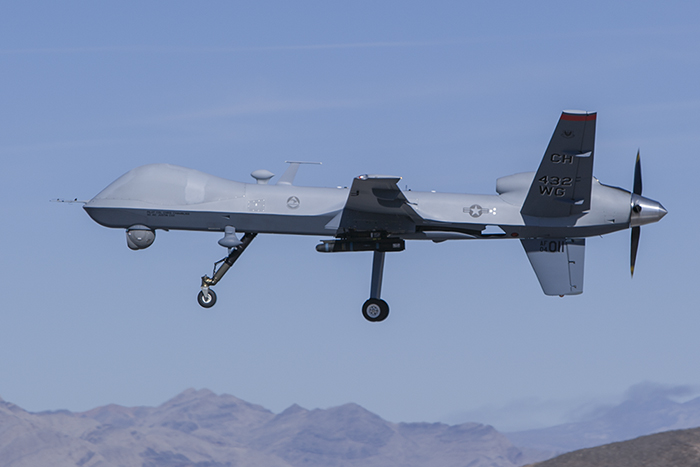

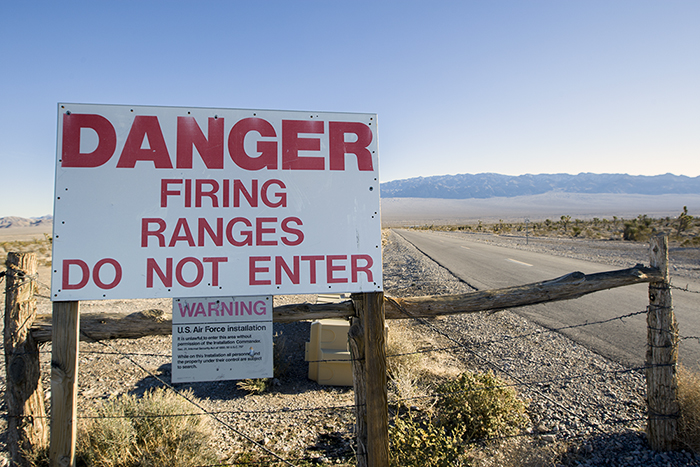
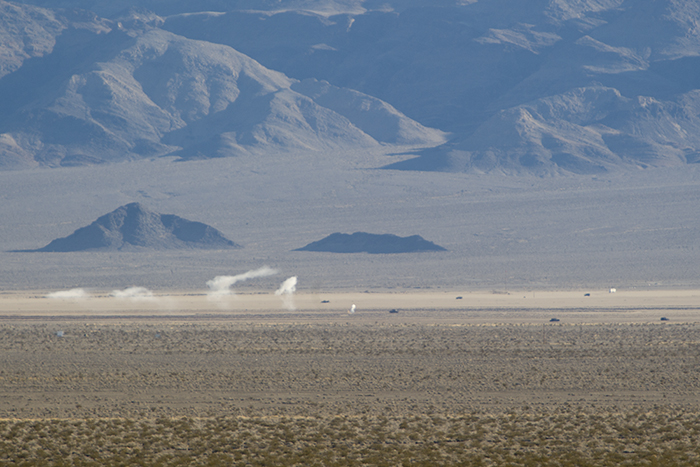
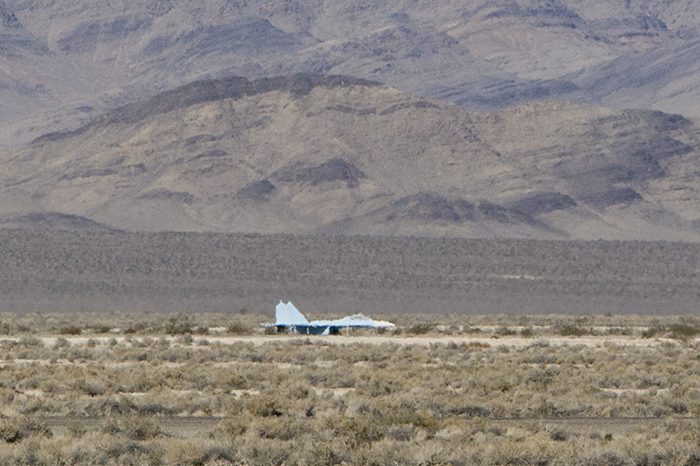
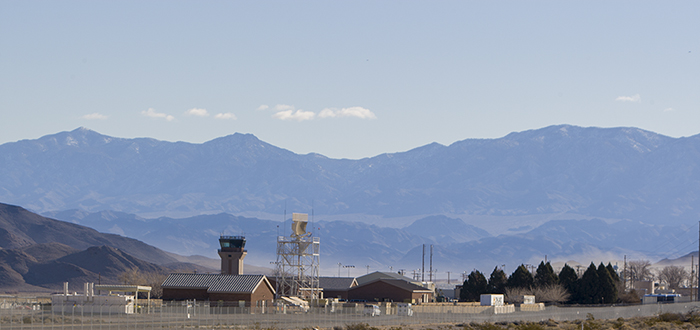
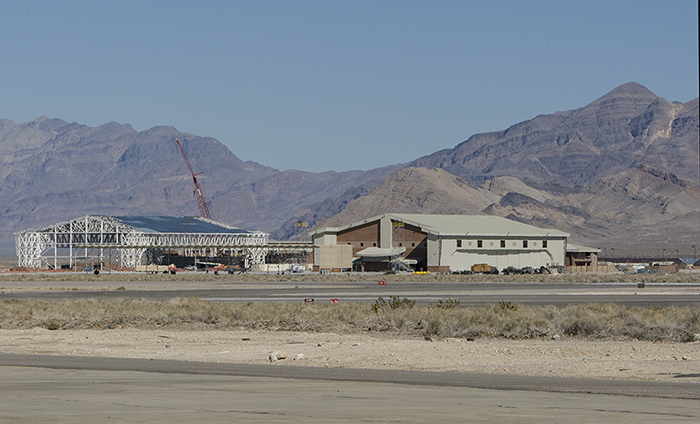
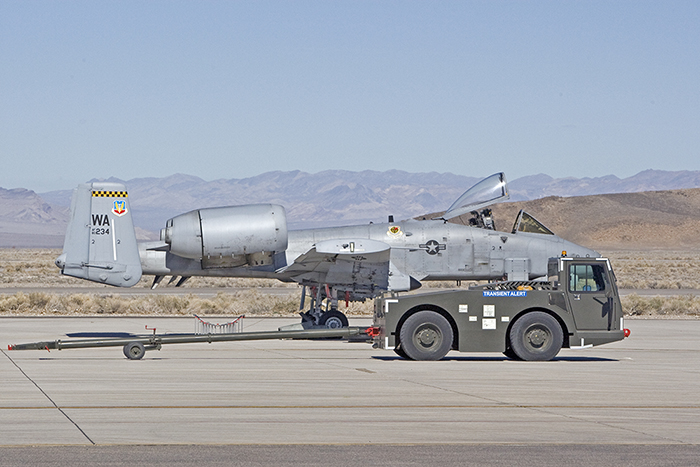
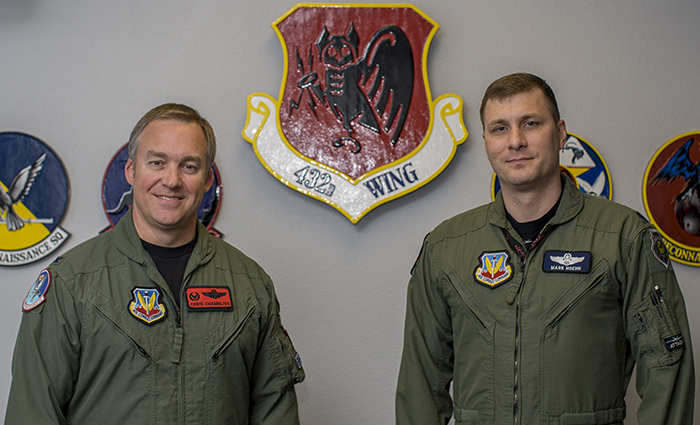
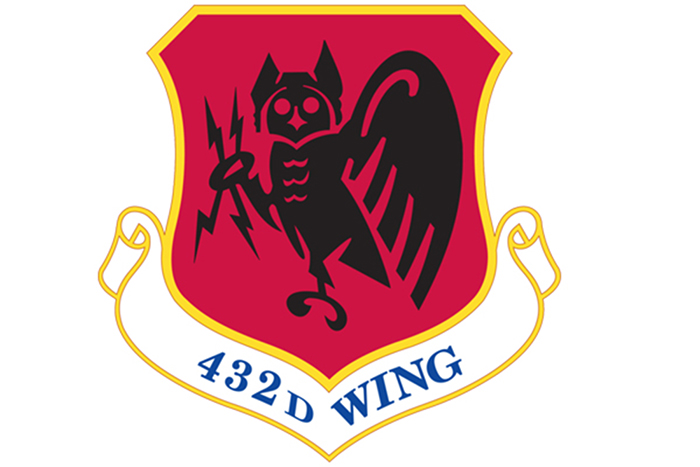
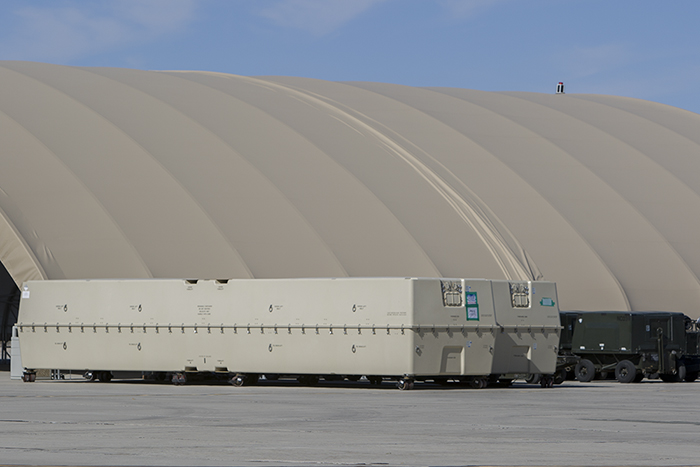
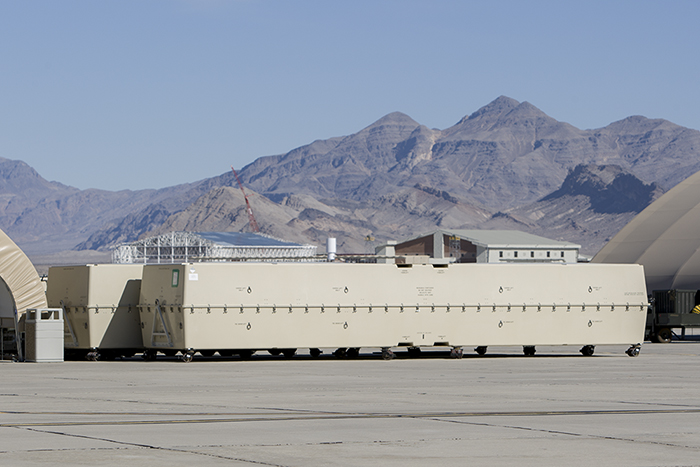
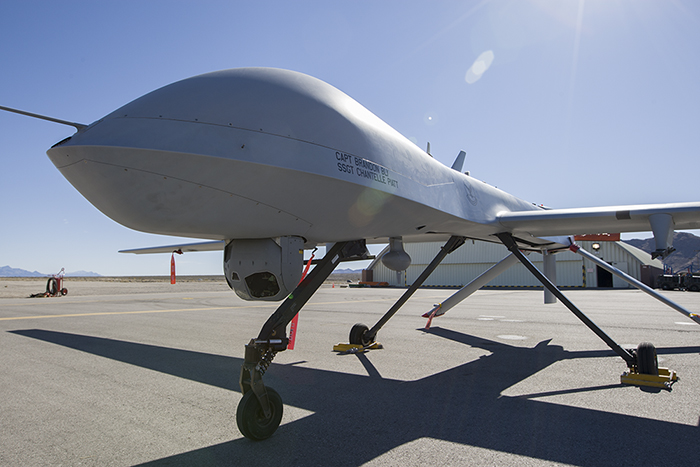
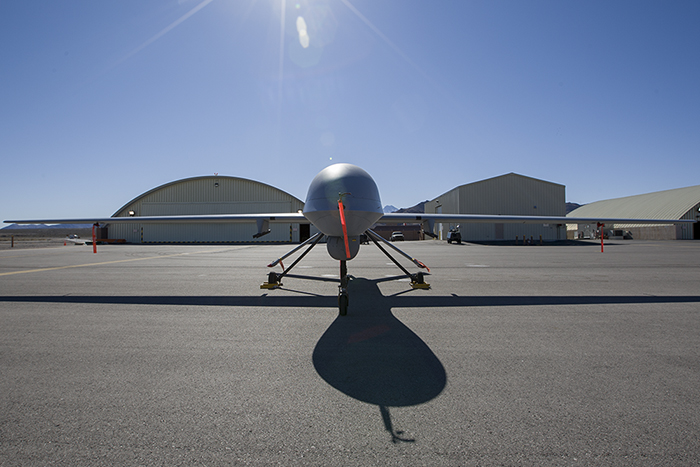
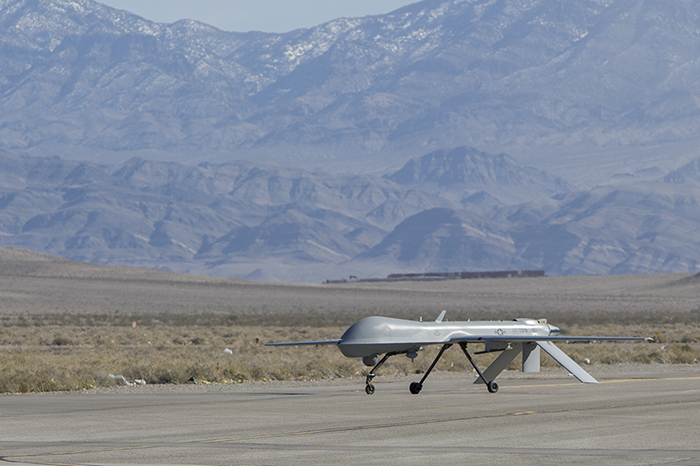
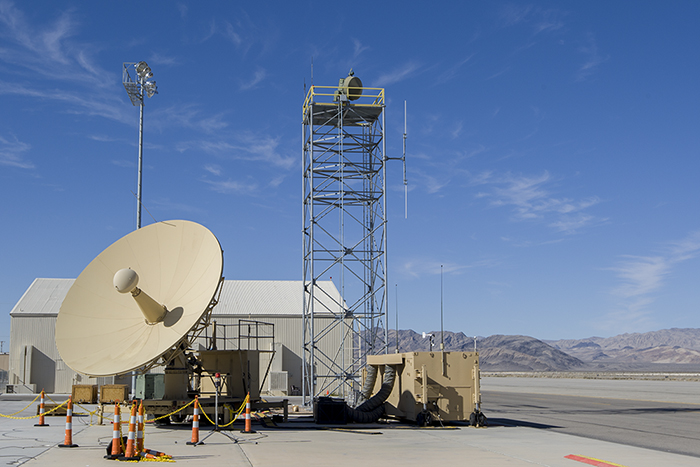
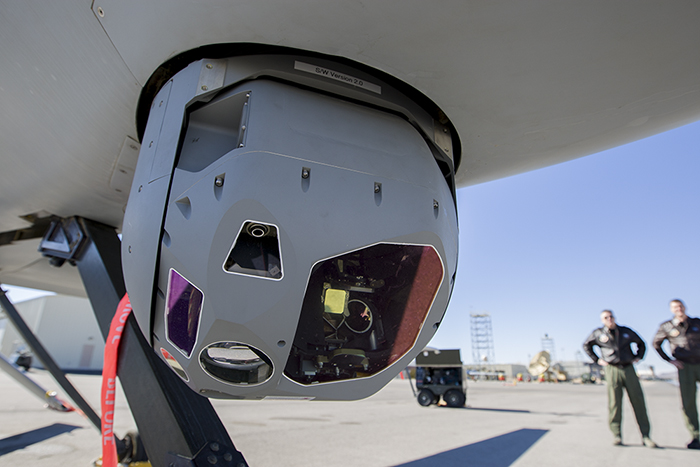
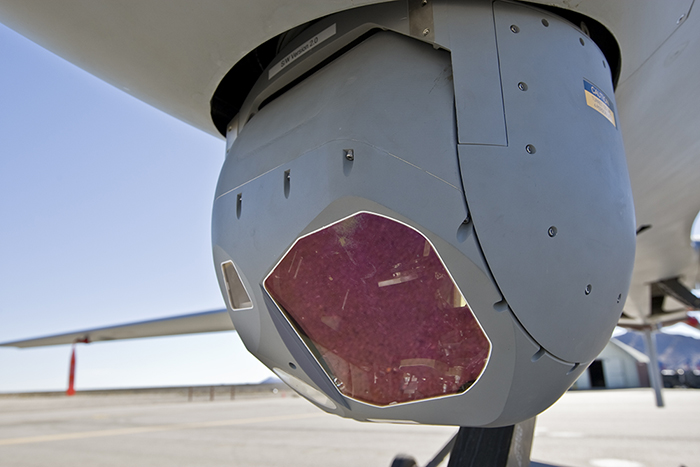
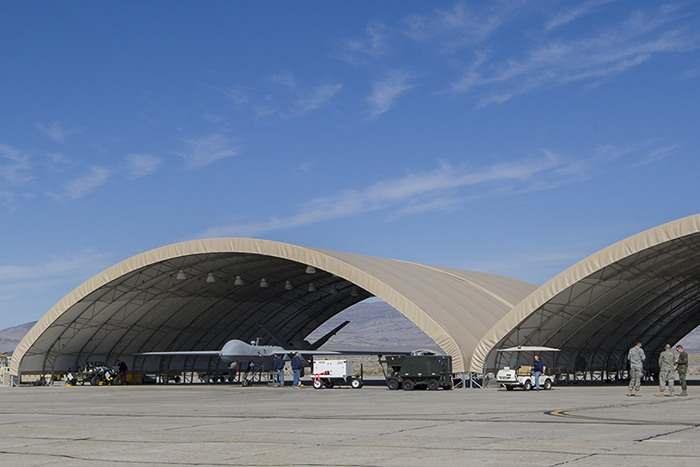
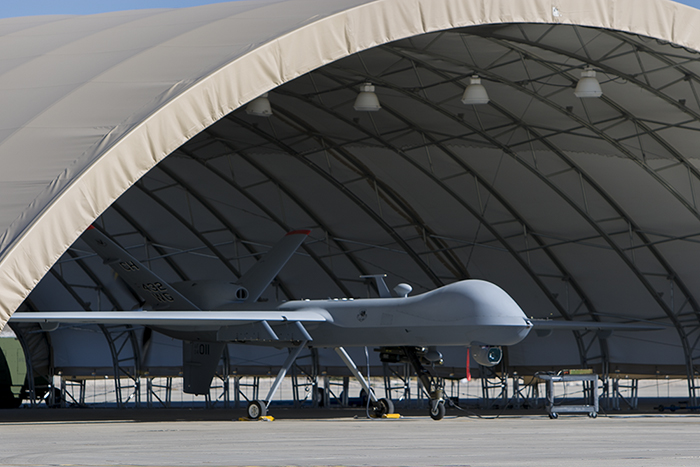
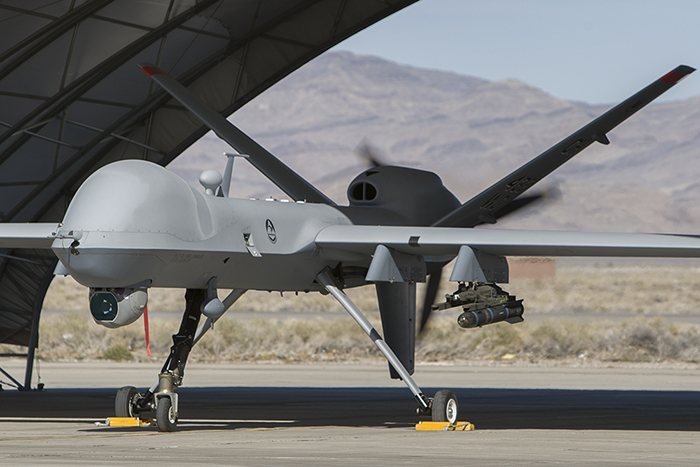
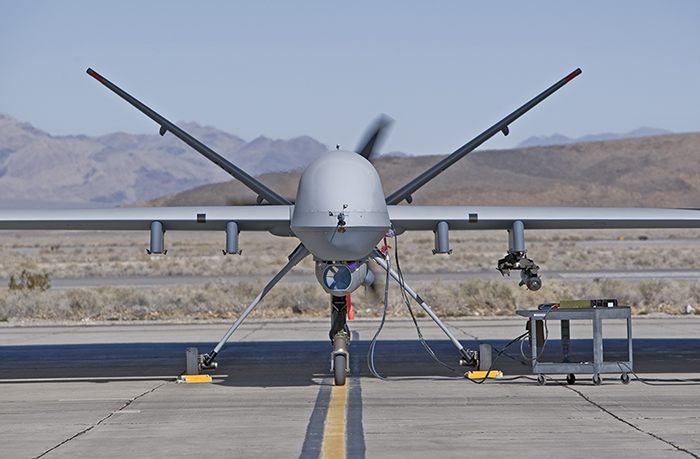
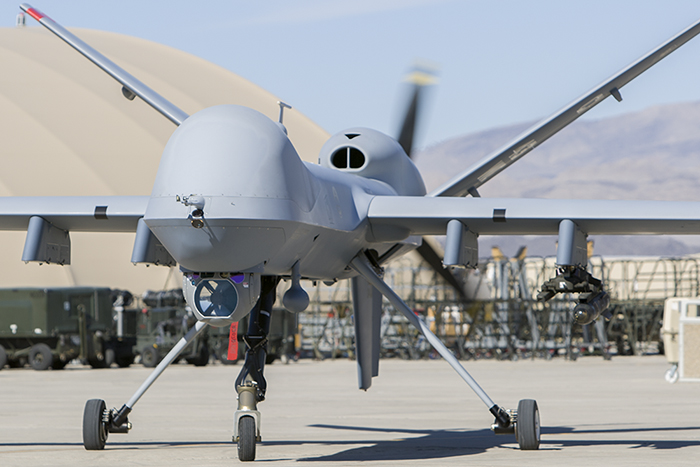
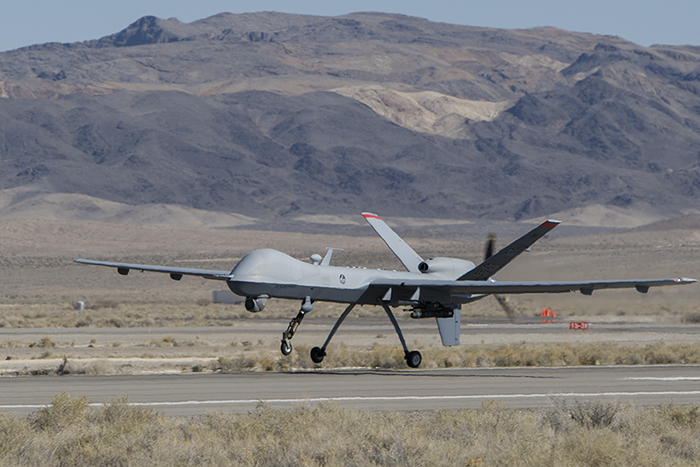
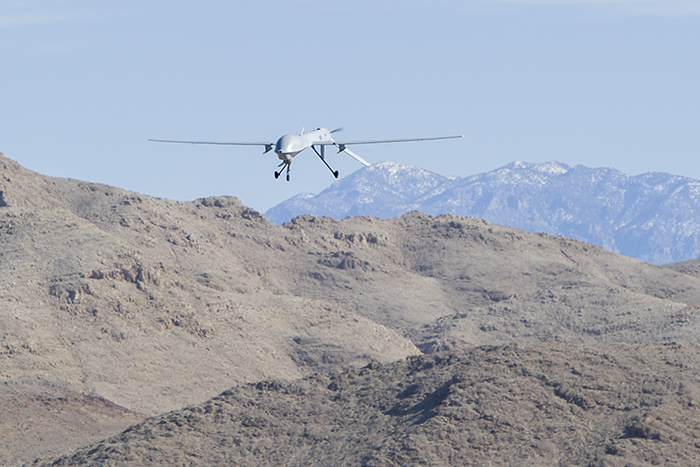

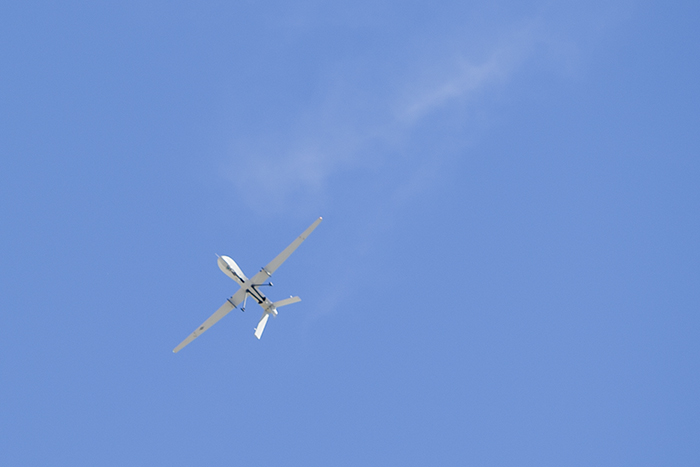
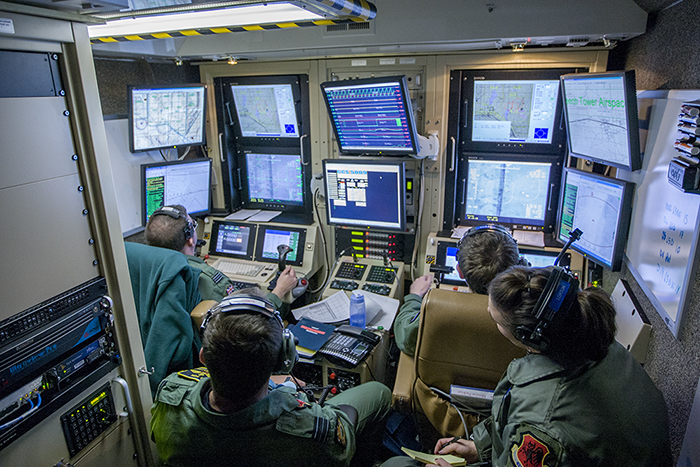
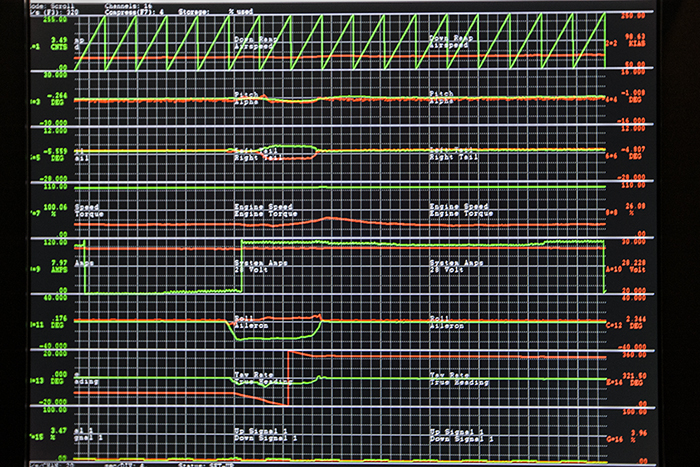
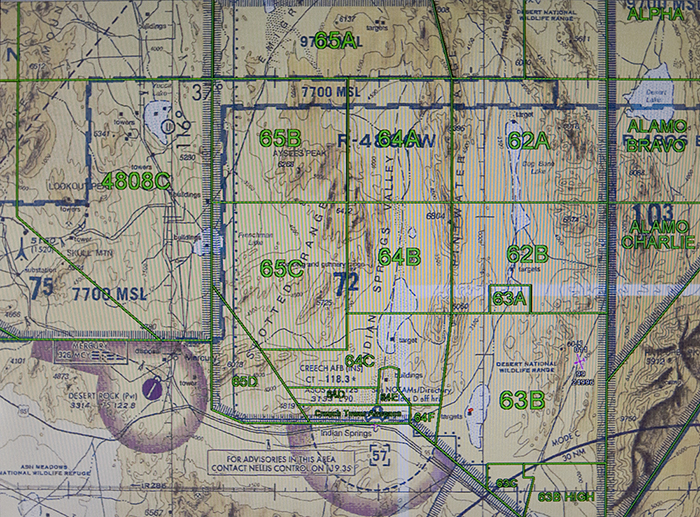
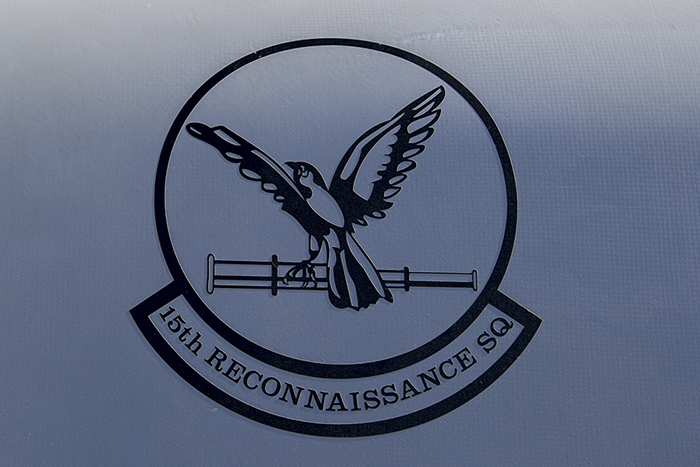
This is an interesting read, was very informative. :)
I’m going to be stationed at Creech AFB this winter and your blog post was great. Thank You.
Happy to be of assistance. I’ve actually been meaning to get back down there to see what has changed over the past couple of years given the investment in those facilities.
its nice reading your blog as i was searching for the right person to speak with. My husband got trained for simulator operator and now got sent to clovis, NM wasnt too happy about it as they told us that we are going to creech and ive moved myself and son there already then last minute sent us somewhere else. I support what he do and all the military servicemen but sometimes it gets so tough to family to be in the situation that military will move you anywhere they want to. this ruin our marriage and im still hoping and finding a right person to send him to creech afb as i cant move to NM :( and hopefully somehow/someone can help him to bring to creech afb.
Janice,
Sorry for the delay in responding. Your comment came in at a very busy time and I must have missed it. Sorry to hear about the problems. Deployments are always difficult, no doubt. But at least he is in CONUS. Deployments overseas or in the Navy can be even more difficult.
Interesting post. Previously, I worked in engineering at Hughes Aircraft developing Road Shows and other solutions for Sysems Division.
It is appearent that companies still do not see the advantage of Modifying the Comercial Off The Shelf items (COTS) to solve problems like those outlined. I would look at the panaramic cameras now used for those nicewide view pictures and modify the software to provide the feed for a 180 degree picture for your landing problems. Since it is already Hi-res video the visual sweep could be accomplished mechanically ,initially and optically or fisheye-lens in a developed product. Plug it in and try it It works. Support the Troops. Thank you
HR, I totally agree that there are many systems that are currently COTS that could assist with situational awareness. Other solutions that are not COTS could be even more useful. The problem is that GA is running pretty thin and are selling as many UAVs as they can make. Currently, they control the entire pipeline of production and engineering which has its strengths and weaknesses. I’d love to see more enhanced reality and supplemental information visualization for UAV pilots, particularly given the lack of environmental constraints that UAV pilots are working in.
I am a manned ISR platform pilot in operating in OEF. UAV’s are the most dangerous thing we have here. We do not worry about getting shot at from the ground, but from a UAV crashing into us. They often don’t talk to anyone, their situational awareness of who is around them is limited if not non existant, they often do not squawk the appropriate codes for ATC to identify, they dont respond to querries from manned assets and the list goes on and on. I was a pilot for 22 years in the military and have never had so many close calls or as they call them, HATR’s. These people fly their remote controlled planes with nothing to lose, so when they enter your airspace or descend through your altitude without talking or requesting it, they put multi million dollars worth of gear and at a minimum 5 aircrew who have families they would like to get home to. Nothing can replace the Situational Awareness that is needed to operate safely besides being here and having something to lose. Enjoy your evening at Harrah’s.
John,
This is a growing problem and why the FAA has been *extremely* reluctant to allow UAV traffic into commercial airspace. Flying a UAV currently is like looking through a toilet paper tube in many ways. The lack of situational awareness is a problem for all sorts of air traffic and will have to be dealt with sooner rather than later through technology or other means, particularly if the Air Force gets its way and has pilots controlling multiple UAVs simultaneously (already happening).
While driving from LV to Beatty on I-95, saw a Predator flying parallel to the highway … I couldn’t believe how close to the road it was!
KUDOS to all of our Air men and women who operate them in our war against terrorism!
Yeah, they may have been eyeballing you the whole time… ;-)